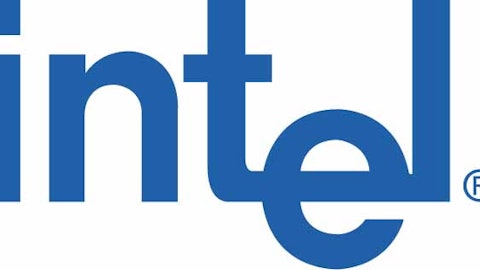Micron Technology, Inc. (NASDAQ:MU) continues to fly. What’s more is there could be even more upside to the stock in the coming months. The stock is already up more than 40% year-to-date, but its pending acquisition of Elpida could send the stock even higher.
The approval to acquire the assets of bankrupt Elpida is one of Micron’s biggest short-term catalysts that could push the stock higher. The addition of Elpida’s assets will add 45% to Micron’s 300 million total wafer capacity.

Micron Technology, Inc. (NASDAQ:MU) is a global manufacturer and marketer of semiconductor devices, namely NAND flash, DRAM and NOR flash memory solutions. The company is already one of the largest memory makers, ranking among the top five suppliers in the world. Its products are used in an increasingly broad range of electronic devices, including personal computers, network servers, mobile phones, digital still cameras, MP3 players and other consumer-electronics products.
The DRAM market has seen pressures due to increasing competition for PCs. Micron, however, is turning to the higher growth potential flash-memory business, which will be driven by increases in the Ultrabook and solid state drive demand increases.
I see the attempt to diversify beyond DRAM as a long-term positive, as does the market. DRAM was previously Micron’s majority of revenue, but as of 2012, memory revenue stacked up as follows: 46% from NAND flash sales, 38% from DRAM and 18% from other segments. The NAND market continues to show robust growth as new consumer electronics and handheld devices drive demand higher.
Some 31 hedge funds were long Micron’s stock at the end of 2012, an 11% change from the previous quarter.
Semis
The semiconductor market has had investors on a roller coaster type of a ride over the past few years due to end-market demand changes and price wars. The semiconductor industry is chock full of well know manufacturers, all offering investors their own respective growth stories, all with different angles.
Applied Materials, Inc. (NASDAQ:AMAT) is one of the world’s largest suppliers of equipment for the fabrication of semiconductor, flat panel liquid crystal displays (LCDs), and solar photovoltaic (PV) cells. Last quarter, Applied Materials, Inc. (NASDAQ:AMAT) saw a 44% increase in total orders from the prior quarter, on the back of an 84% rise in semiconductor orders.
Applied has some robust hedge fund interest, most notable from Sandy Nairn’s Edinburgh Partners, which had the most valuable position in the company at the end of 2012, worth close to $187 million and comprising 10.6% of its total 13F portfolio.
Analog Devices, Inc. (NASDAQ:ADI) is the second-largest producer of analog chips after Texas Instruments Incorporated (NASDAQ:TXN), with a strong position in high performance analog (HPA). Within this segment, Analog has a leading market position in converters, where it has around half the market share. However, the company has vast exposure to the industrial market, which accounted for 45% of 2012 revenue.
ARM Holdings plc (ADR) (NASDAQ:ARMH) designs high performance RISC microprocessors and related technology and software, and sells development systems to enhance the performance, cost-effectiveness and power-efficiency of an extensive range of embedded applications. ARM appears to be a bit expensive from a valuation perspective, trading with a price-to-earnings ratio that’s a 470% premium to the S&P 500 P/E, while the five-year average is closer to 310%.
Compared to Micron, ARM Holdings plc (ADR) (NASDAQ:ARMH) has a much less hedge fund interest, with only 16 hedge funds owning the stock at the end of 2012 compared to Micron’s 31.
NVIDIA Corporation (NASDAQ:NVDA) is a major chip maker for PCs, competing with the likes of Intel Corporation (NASDAQ:INTC) and AMD. Nvidia and these other companies have seen significant pressure due to a slowdown in the PC market. Nvidia’s PC-based graphics card has been under the most pressure, where the company gets close to 34% of revenue from GPU (desktops and notebooks).
By the numbers
Micron Technology, Inc. (NASDAQ:MU) remains relatively cheap, trading at only 13 times forward earnings, while Applied Materials is also at 13 times, Analog 17 times, ARM 27 times, and NVIDIA Corporation (NASDAQ:NVDA) 15 times. Micron also has an impressive future expected growth, with analysts expecting EPS to grow at an annualized 13% over the next five years, which is higher than any of the company’s peers listed, except ARM. ARM Holdings plc (ADR) (NASDAQ:ARMH) is expected to grow EPS 22%, but its high valuation limits the attractiveness of this expected high growth.
Micron Technology, Inc. (NASDAQ:MU) pays no dividend, unlike some of its major semi-conductor peers. Applied Materials, Inc. (NASDAQ:AMAT) pays a 3% dividend yield, Analog 3%, and NVIDIA Corporation (NASDAQ:NVDA) 2.4%. However, this is not necessarily a negative, as the company is putting the cash saved from not paying a dividend to work.
Don’t be fooled
Micron Technology, Inc. (NASDAQ:MU) has one of the best growth profiles in the industry. Couple this with its relatively cheap valuation and the stock can easily add to its already robust share price movement. The current consensus average price target on the company is higher than $11, and Sanford Bernstein also recently upped its price target on Micron to $13 per share, which represents a 40% upside from current levels.
Marshall Hargrave has no position in any stocks mentioned. The Motley Fool has no position in any of the stocks mentioned.
